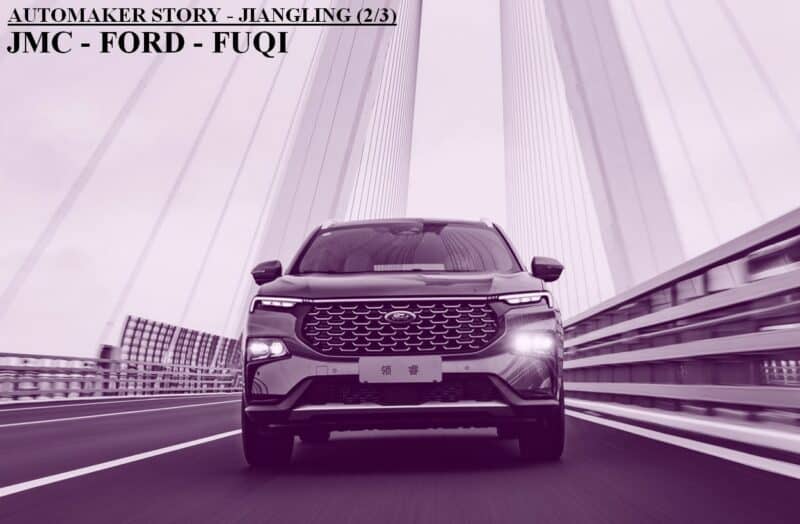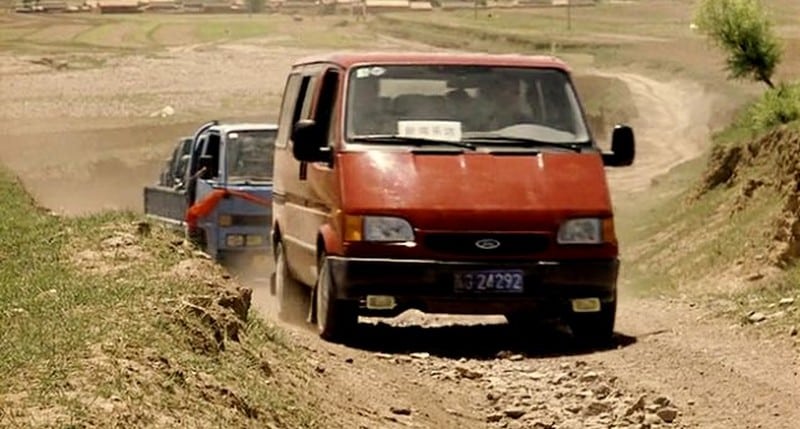The Big Read – Jiangling (2/3) – Ford joins the party
Last week, the Jiangling story ended in the late 1990s. Chairman and general manager Sun Min had transformed the company from a small, nearly bankrupt truck maker into a force to be reckoned with, with a little help from Japan’s Isuzu Motors. He put all the gears in motion for further expansion. But let me first remind you of the company’s composition.
Jiangling Motors Group Corporation is the main holding, controlled by Nanchang City. Jiangling acquired many smaller companies but has three important car-making units. First of course is the joint venture with Isuzu, called Jiangxi Isuzu Motors. We covered that subject last week. The others are Jiangling Motors Co., Ltd., the company that makes JMC-branded cars and Jiangling Lufeng Motors, that will give birth to the Landwind brand. Both companies are subsidiaries of Jiangling Group. Landwind is on for next week, today it’s JMC time.
JMC becomes a joint venture
JMC was established in 1993 as a wholly owned subsidiary of Jiangling Group, but that didn’t last long. Still, in the same year, Jiangling Group listed about 20% of the JMC shares on the Shenzhen stock exchange to fund a new engine factory. Engines had been the bottleneck for Jiangling’s car production, so this was a welcome addition. The engine factory was completed in 1995 and significantly lowered the dependence on engines imported from Japan or bought from third-party suppliers.
At the same time, JMC started to introduce its car lineup. They gradually introduced a range of pickups, vans, and light trucks. There were little surprises with these cars, as they all were rebadged Isuzu products. The truth is, Jiangling now had its car brand and factory, but it didn’t have any R&D capability. So, its product supply was completely dependent on the help of partners. Sun Min wanted to get into the passenger car business. Isuzu had no suitable models on offer, so he needed an additional partner.
Isuzu enjoyed a long cooperation with General Motors. In 1995, Sun boarded a plane and flew to Detroit, where he met with the upper management of GM. He made his case, but the GM directors had different ideas about their Chinese operations, so Sun was denied. He was in the American capital of the motor industry, so he used his connections to get a meeting with Ford as well. The directors of the Blue Oval were more forthcoming and Sun returned home with a preliminary agreement for cooperation.
Back in China, Jiangling issued some more shares of JMC and sold them to Ford in 1996. Initially, Ford’s share was 20%, but the Americans kept adding equity over the years in several small steps. Fast forward to today and Ford owns 32% of JMC, Jiangling Group holds 41% (indirectly, more on that later on) and the remaining 27% is free floating. JMC became a listed joint venture, a rather unique setup in China.
Ford agreed to manufacture the Transit van with JMC. Historians aren’t really in agreement on how to mark all the different generations of this long-running model name. So what I will call the mk-2b is the 1994 facelift version of the 1986 Transit. This Transit launched on the Chinese market in 1997 and was available with two engines: a 2.4-liter petrol engine sourced from Mitsubishi and a 2.8 turbodiesel made by JMC (a rebadged Isuzu engine).
JMC entered the market with high hopes for the Ford Transit. The project team had assessed the market and concluded that the Transit was so much better than the local competition, that they could ask a premium price. This proved to be a miscalculation. Customers opted for one of the many cheaper Toyota Hiace copies, like the ones made by Jinbei, and Transit sales were disappointing for the first two years. Then Sun Min personally intervened. He ordered some small changes to the cars and the sales process and drastically cut prices. From then on, sales improved and the Transit grew ever so successful as in many other markets around the world.
The China Transit
Let’s walk through the entire Transit story at once. The mk-2b remained mostly the same, until 2006, when it received a facelift. This was a ‘China-only’ event since the Transit had been replaced by a new generation in most of the world. That new one arrived in China in 2008. It didn’t spell the end for the mk-2b, it was simply renamed Transit Classic. Over the years, JMC and Ford made small changes to the car, like adding or removing seating options, but essentially the same vehicle stayed in production until 2017.
And then it didn’t die either. Ford gave the car to JMC and they started making their own version. JMC put a new face on the van, resembling a stormtrooper from Star Wars, and named it Teshun. The JMC-built 2.8 turbodiesel was the only power option until 2021 when an electric version joined the ranks. In 2021, the Teshun got a small facelift, presumably the first of many.
Ford’s new Transit in 2008 I will call the mk-3b model, the 2006 facelift version of the 2000 Transit. With it came the transition to Ford engines. JMC began to assemble a line of Ford Ecoboost petrol engines and Duratorq diesels alongside the Isuzu-based designs. The Transit mk-3b was very briefly available with a 2.3-liter petrol, but almost all sales went to the diesel. The Duratorq engine was 2.4 liters at first and 2.2 liters later and available in different power options.
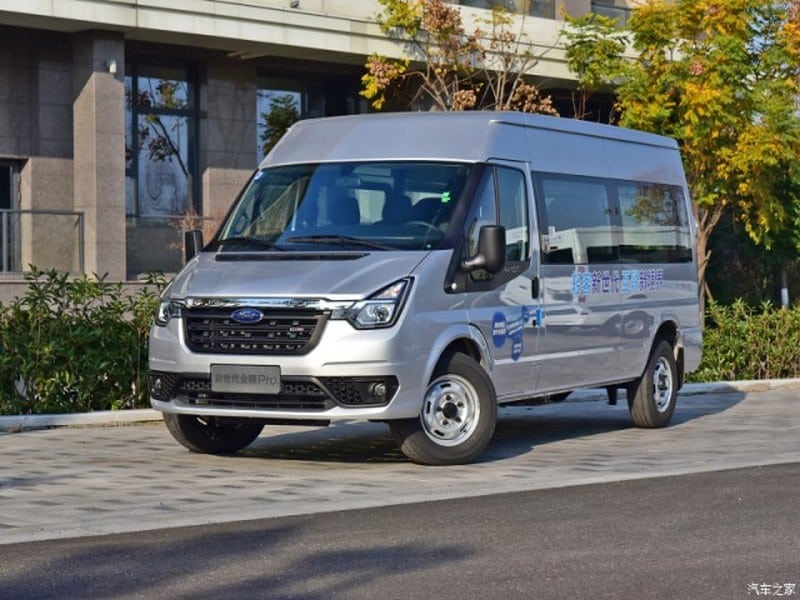
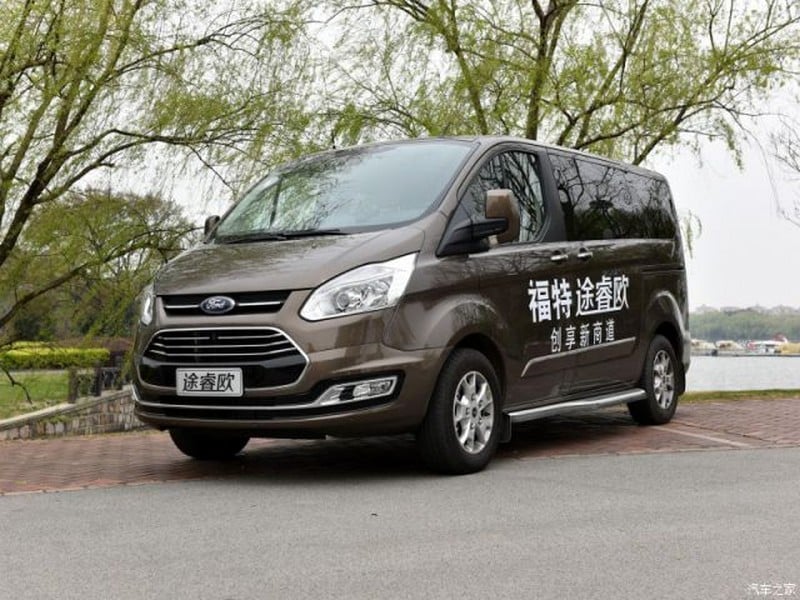
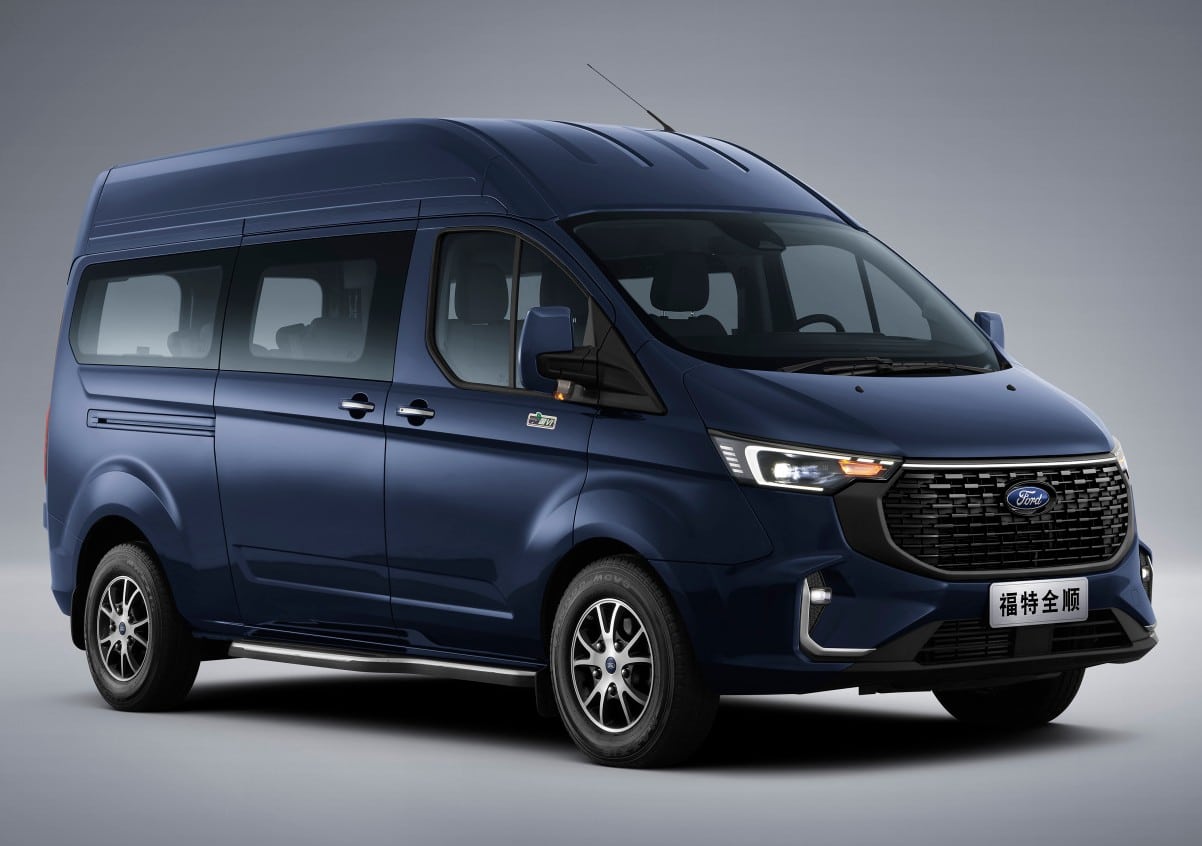
Like the earlier model, the mk-3b enjoyed a very long career. There was a facelift in 2013 and another one in 2020, when it was named Transit Pro. Halfway through 2022, Ford shared this car with JMC as well. And in a repeat of history, JMC designed a new front end and started selling the model as JMC Fushun. It probably means that Ford will bring the mk-4 Transit to China, but that has not been confirmed yet.
Since 2016, Ford also makes the front-wheel drive Transit Custom in China. It’s slightly smaller than the regular Transit and powered by a 2-liter turbo petrol or turbodiesel engine. A more luxurious shuttle version is called Tourneo. Both variants were facelifted in 2022 and Ford added a China-only VIP version with a very different design.
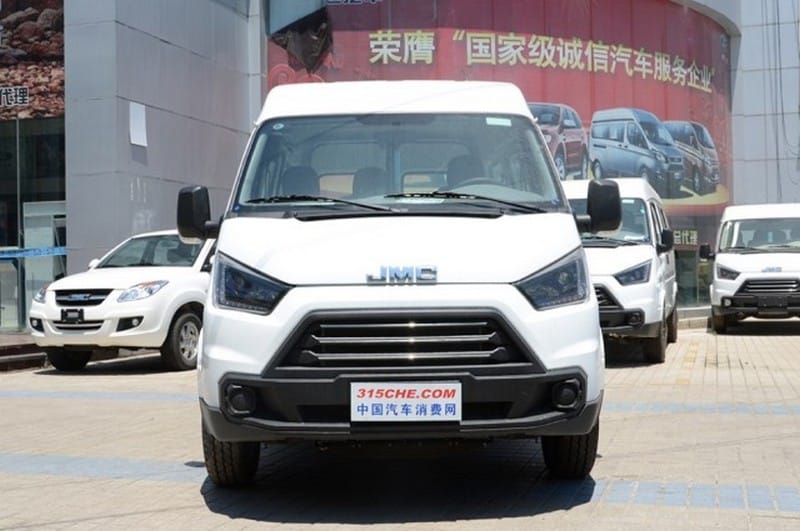
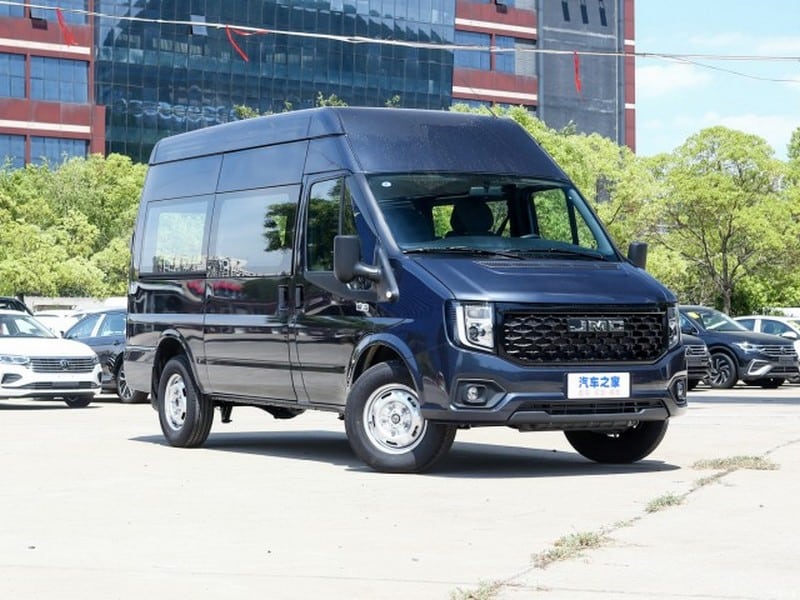
The Sun goes down
In June 2003, the mayor of Nanchang suddenly announced some personnel changes in the party cadres. At the top of the list was Sun Min, who was appointed as the economic advisor of the Nanchang Municipal People’s Government and would no longer serve as the chairman or general manager of Jiangling Group. This announcement was a big surprise, that no one saw coming. Jiangling was in excellent shape, profitable, and selling well. So what was happening?
Apart from Jiangling, there was another quite successful car manufacturer in Jiangxi province. This was Changhe, owned by China’s Aviation Group, and one the former military factories that switched to car production. In Changhe’s case minivans based on the Suzuki Carry. Changhe was probably the third minicar maker behind Wuling and Changan, so one of the most successful ones. Jiangxi officials envisioned a merger between Jiangling and Changhe to create a vast car-making group, covering every segment.
Sun Min opposed the idea and he was probably too vocal about his objections. He finally alienated the politicians that had helped him in the past. Sun was gracefully moved aside. The advisory role was just ceremonial, Sun was retiring. In interviews after the fact he said: “I have a little selfishness and hope that Jiangling will achieve better development under the leadership of the new leader, otherwise I will be very sad.”
As I said in Part 1, Sun is on par with well-known Western transition managers. When Sun entered Jiangling, it was on the brink of collapse and when he retired, it was flourishing. His words, derived from any resentment after his dismissal, show the strong character he was. As far as I can find, Sun Min is still alive, which would make him 87 years old today.
As a matter of fact, the merger between Jiangling and Changhe would never take place.
New territory
We meandered into the Transit story because JMC was looking for new products to make. Besides the Transit, they produced the Baodian pickup and Baowei SUV, based on the Isuzu TF-series. By 2010, these cars became slightly dated (although the Baodian was sold up until 2020). JMC did have some development capabilities by now, through the Landwind operation, but the big opportunity came when Ford allowed them access to a new platform. Mainly for the Asian market, Ford had a new Ranger platform (codenamed T6) under development and it was shared with JMC.
JMC made some rather extensive changes to the platform, a ladder frame for body-on-frame pickups and SUVs, called it N350, and introduced it as an in-house development. Two N350 vehicles were launched. First a SUV called Yusheng in 2011 and a pickup named Yuhu a year later. It was a large diversion from the former Isuzu-based cars.
The Yusheng was powered by a Mitsubishi 2.0T petrol or JMC-built Ford 2.4TD diesel. It was a modern-looking mid-size SUV and JMC kept it current with regular updates. The first facelift came in 2013 when the name also changed to Yusheng S350. The next facelift was in 2017 when a direct-injected JMC-Ford 2.0T petrol engine replaced the Mitsubishi unit and the diesel version got a more modern 2.0TD. For the last update in 2020, the engines were upgraded to the China 6 emission standard, and the 7-seat version was dropped.

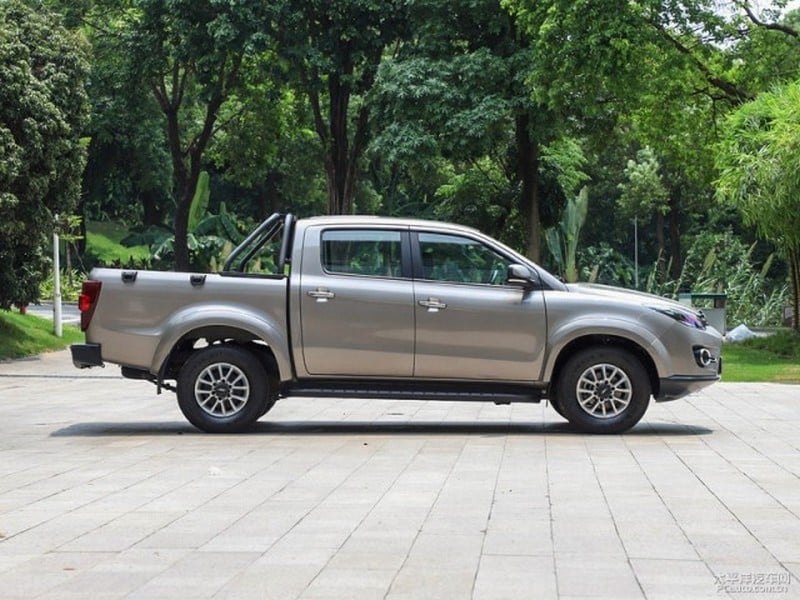
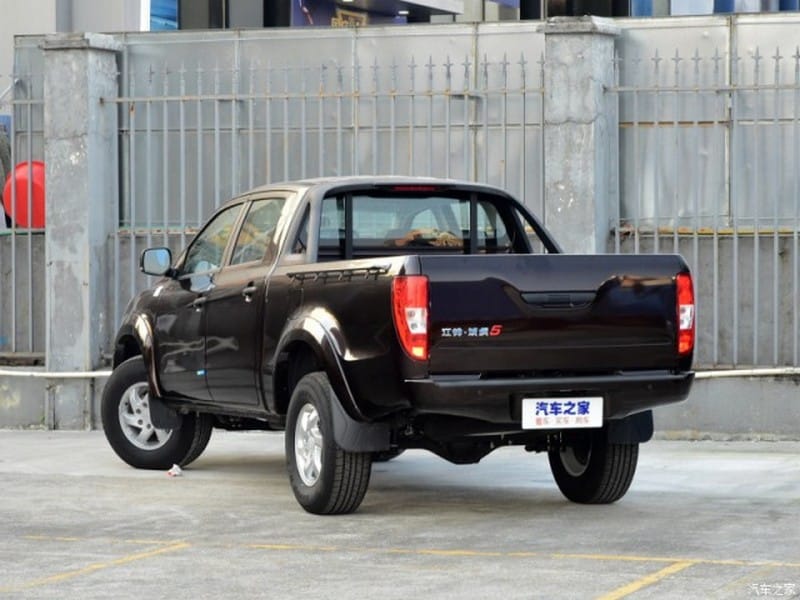
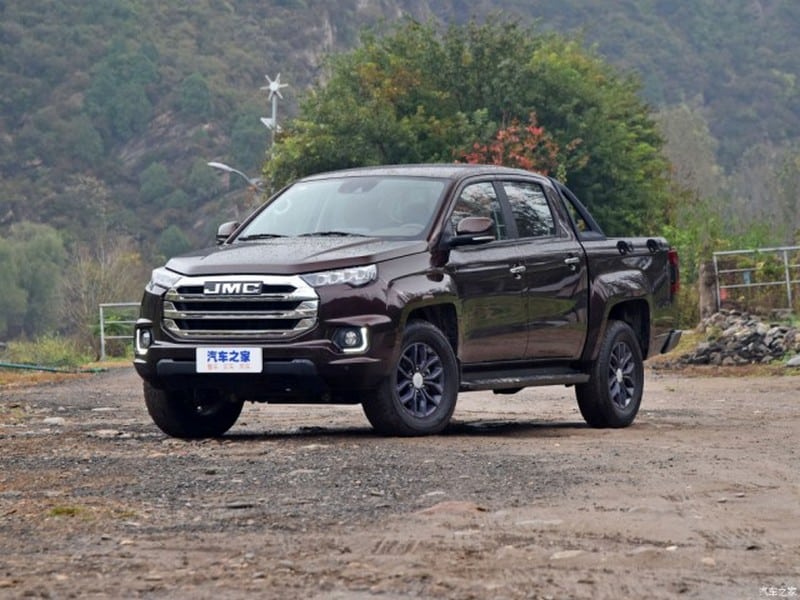

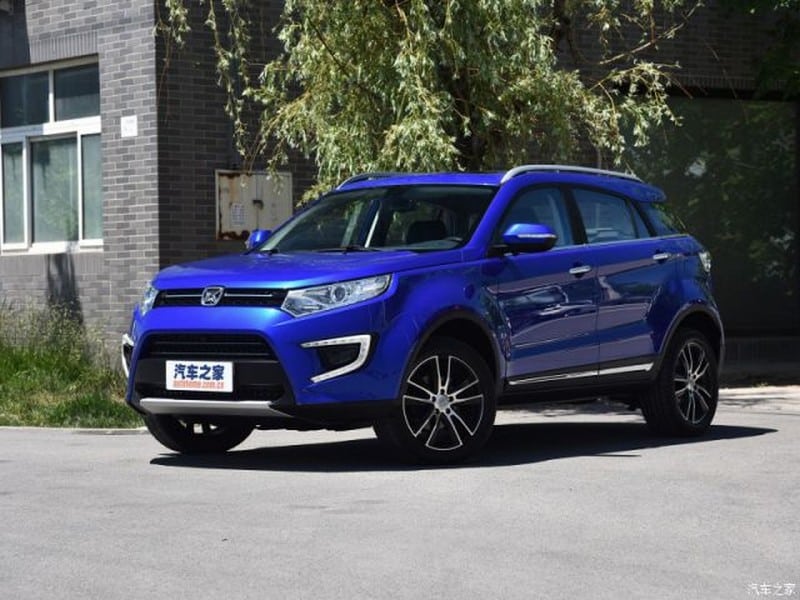

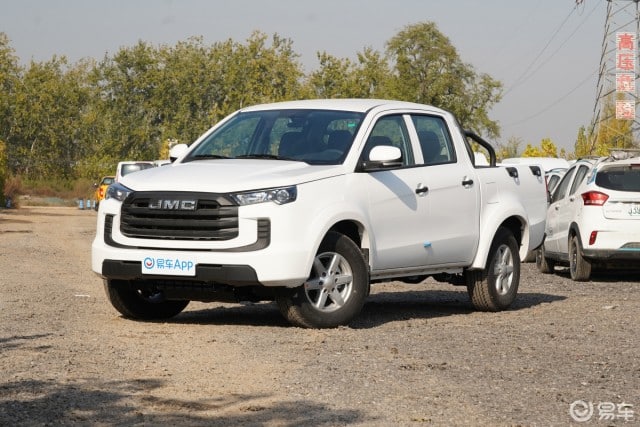
The Yuhu pickup featured even more updates and versions over its lifetime. Initially, the pickup was sold in a single version, with 2.4-liter petrol from Mitsubishi or the Ford 2.4TD. At the first facelift, the new 2.0TD replaced the 2.4TD, but the older diesel remained in production as Yuhu Classic with slightly different styling. In 2018, JMC switched to a numbering system. The Yuhu became Yuhu 7, the Classic became Yuhu 5 and the new Yuhu 3 was meant to replace the Baodian, but was actually sold alongside. In 2019, the Yuhu 9 completed the range, imitating American-style pickups with a more boxy design. In 2020, JMC finally replaced the Baodian (after 18 years on the market) with a new model on the N350 platform. This also spelled the end for the Yuhu 3 and 5.
Ford’s main joint venture in China is with Changan, but by 2016 they decided to make passenger cars at JMC as well. The first model became the 2nd generation Everest, an SUV by Ford Australia riding on the Ranger T6 platform. Size-wise it operated in the same segment as the Yusheng S350, but it was positioned slightly above it.
Ford’s second vehicle has a more interesting story because it started its life as a JMC product. Landwind made the X7 in 2015. This car became world famous for being a clear copy of the Range Rover Evoque. It stood on a new platform and was powered by a 1.5T engine, developed by JMC and engineering firm AVL. JMC designed its own compact crossover on the same technology and called it Yusheng S330. Sales started in 2017.


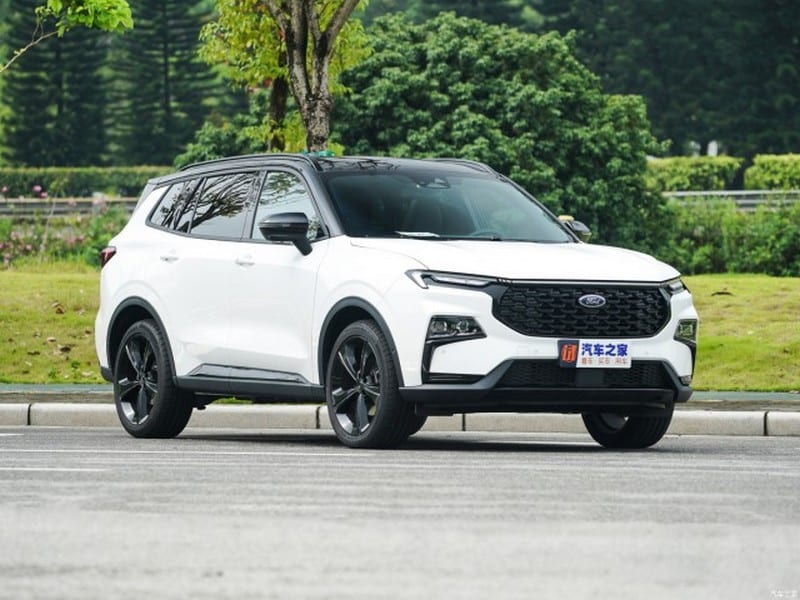

However, in 2019 the design was transferred to Ford. The Americans did a little restyling, plastered the Ecoboost label on the Chinese engine, and marketed the car as Ford Territory. This is one of the very few occasions (or maybe the only one) that a foreign joint venture partner adopts a Chinese-developed model as its own. And Ford took it a step further. The Ford Equator appeared in 2021, a newly developed 7-seat crossover, basically a stretched Territory with all-new styling. Power comes from another JMC and AVL co-development, a 2.0T petrol engine that Ford also gave the Ecoboost blessing. A 5-seat version called Equator Sport hit the market in 2022 and will eventually replace the Territory.
That concludes the overview of JMC products, but not before having said that the company also still makes a wide range of light trucks based on the Isuzu N-series design. The original name Qingka has been replaced with others like Kaiwei, Kairui, and Kaiyun over time.
You can never have enough pickups
Besides Jiangling, there’s another car manufacturer originating from Nanchang City, although it never had operations in the city. In 1969, the Nanchang Automobile Factory was established for the production of military vehicles. The new company was based at the Nanchang traffic school. That may sound unlikely, but the Nanchang party officials enlisted the help of several companies, among them the Jiangxi Tractor Factory where Sun Min was employed, for the construction of the factory. For strategic reasons, the federal government decided that the factory should be built in Fuzhou City, further south in Jiangxi Province.
The company moved in late 1969 and renamed itself Jiangxi Bamianshan Automobile Factory. That name lasted four years until it took its most familiar name: Fuzhou Automobile Factory. The factory assembled off-road trucks for the military, and agricultural vehicles from Ganjiang (a Nanchang company) and dump trucks based on the Jinggangshan. So Fuzhou Automobile was a modification plant until the early 1980s. In 1982, they obtained some drawings from Beijing Automobile Works and by the mid-1980s Fuzhou Automobile produced vehicles based on the BJ212 and BJ213 designs, branded as Fuqi.
Fuqi developed several cars on the BJ212 chassis, including a small sedan. In the 1990s, Fuqi also made a small car with a plastic body that resembled the Daihatsu Charade sedan. A self-designed liftback version appeared in 1995. Then Fuqi acquired molds for a Toyota Land Cruiser. The company started making the Land Cruiser copy around the turn of the century and a pickup version as well. In 2003, fellow car maker Zhongxing (ZX Auto) acquired Fuqi and passed it on to its parent company Huaxiang Group (an auto parts maker) a year later.
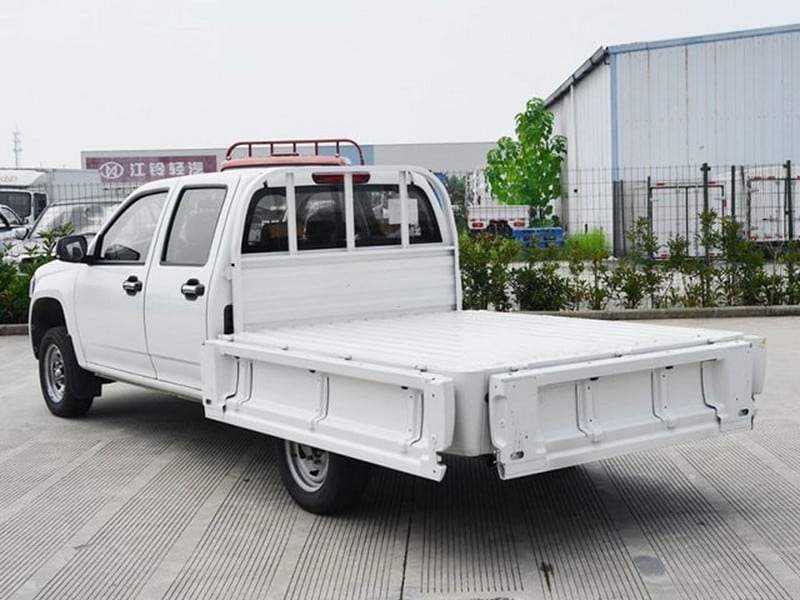
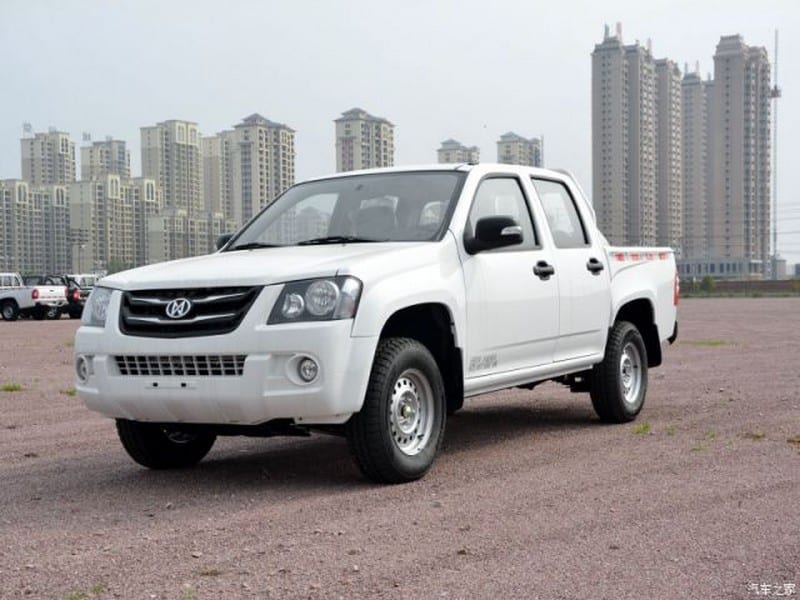
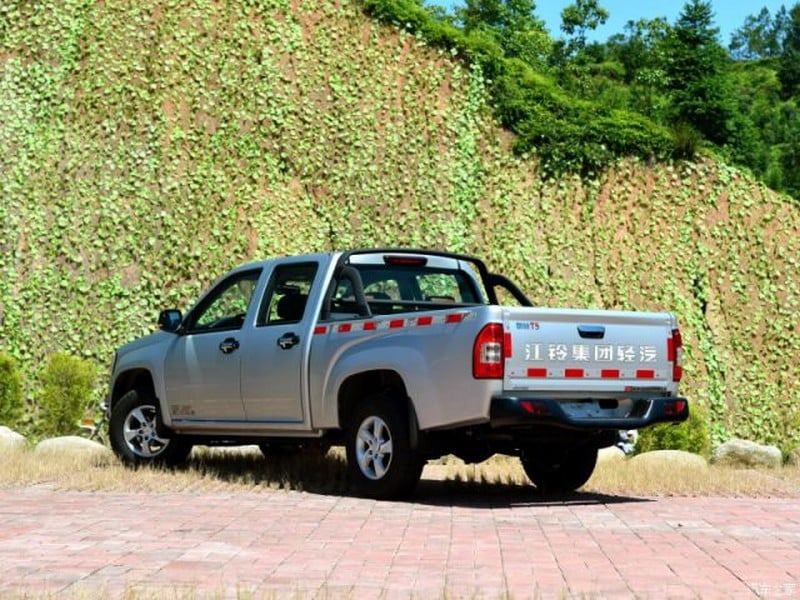

Huaxiang Group tried to gain a foothold in the automotive industry as a genuine manufacturer, using both the Zhongxing and Fuqi brand. Focus was on the off-road market, where Zhongxing was a well-known player and Fuqi had the Land Cruiser copy. Huaxiang tried for several years but eventually ran out of funds. It sold both car makers separately in 2007. Fuqi went through several ownership changes before it ended up in the hands of the local government again. The government placed Fuqi under the control of Jiangling Group in January 2013.
When Jiangling took control, Fuqi’s main product was a generic pickup called Qiling. This pickup had the Foday-sourced body and the same engines as used by many competitors. Jiangling dropped the Fuqi name, sold the pickups as JMC, and renamed the company to Jiangling Group Light Vehicle. It split the Qiling line into several ranges (T3, T5, and T7) with different appearances and introduced a pure work truck (Qiling T100) a few years later.
But apparently, you can have enough pickups. JMC had plenty with the self-branded Baodian and Yuhu and several series from Jiangxi Isuzu. The Qiling series didn’t add much to that, so in 2018 Jiangling decided to get rid of the company again. They sold the Fuzhou factory to Jiangxi Dacheng Automobile, a company originating from the Zotye supply chain. It made some converted Zotye vehicles as Dorcen. Production of the Qiling pickups continued until 2020 when troubles at Zotye also caused Dacheng to halt production. More recently, the Dacheng company tried to revive itself with the contract manufacturing for NEV startup Niutron, but that attempt failed.
Some small Jiangling tidbits
There are some small bits of information about vehicle production at Jiangling, that don’t warrant an entire section, so I’ve grouped them here.
– Jiangling has several subsidiaries specializing in vehicle modification. These companies make a wide range of products, from police cars and recreational vehicles to all kinds of truck modifications.
– Jiangling partly makes its own transmissions through a joint venture with German Getrag company.
– In 2011, Jiangling acquired a company that was founded as the Jiangxi Firefighting Vehicle Manufacturing Factory in 1958. Apart from firefighting equipment, the company also made buses. After the takeover, the company name changed to Jiangling Group Jingma Automobile. Jingma makes its own version of the Ford Transit mk-2b, marketed as the Jingma Fortune.
– The Jiangxi Tractor Factory, where Sun Min spent his early career, was separately owned by Nanchang City. Jiangxi Tractor made Fengshou-branded agricultural tractors since the 1940s. In 1999, it was merged into the Jiangling Group and renamed Jiangling Tractor Factory. In 2008, Jiangling Tractor transformed into a joint venture with Mahindra from India. Initially, Mahindra owned 80% of Jiangling Tractor, in 2013 it became the sole owner.
– JMC reorganized an ailing truck factory, formerly owned by Changan, in 2013. Renamed JMC Heavy Duty Vehicle, the company began to make a series of heavy trucks based on Ford trucks. JMC Heavy Duty never turned profitable and JMC sold off the engine plant to Yunnei Group and the vehicle factory to Volvo Trucks in 2021.
Next week
In the final episode on Jiangling Group we’ll explore the Landwind story and meet a bunch of cheap EVs.



